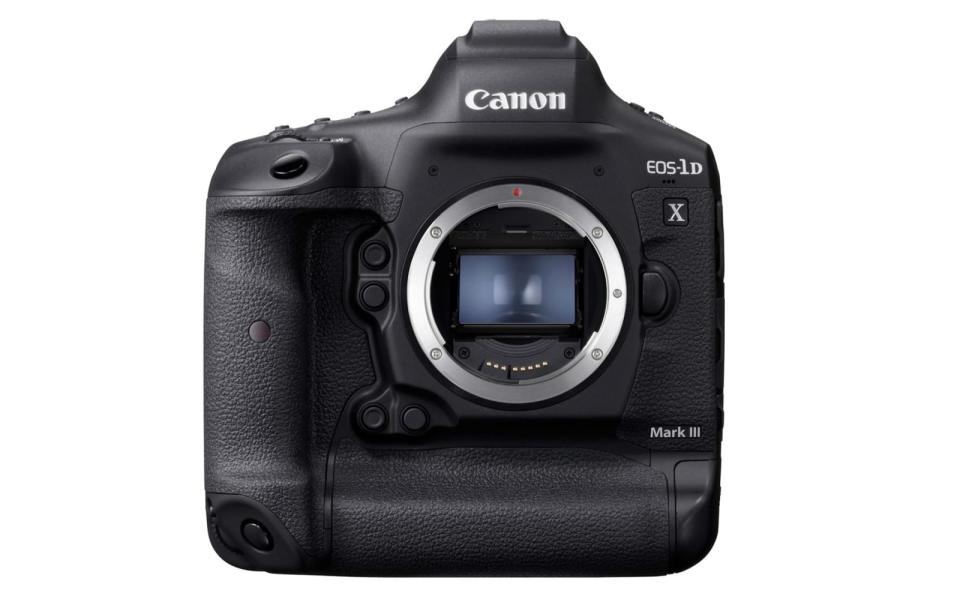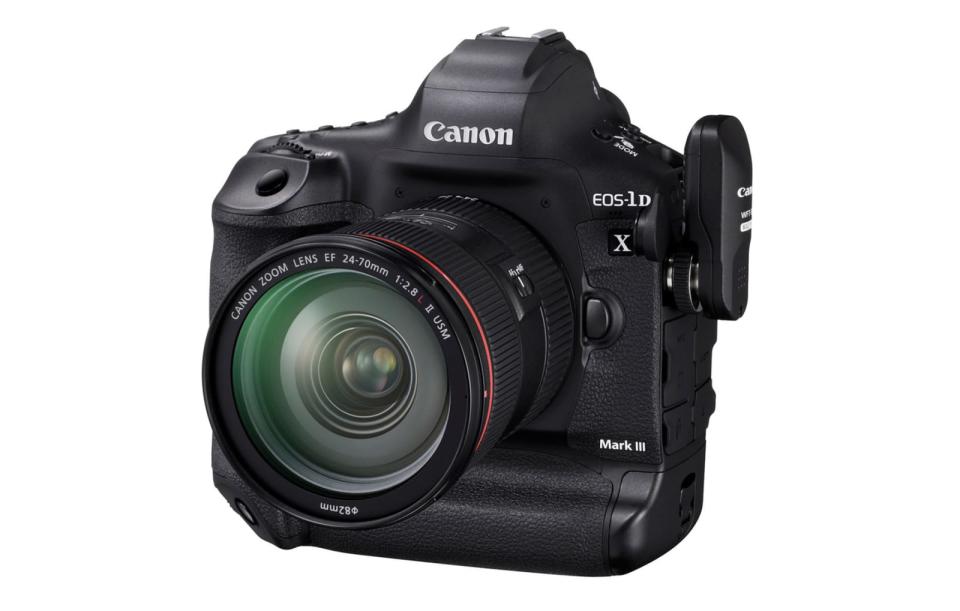Canon's EOS 1D X Mark III will be a technological tour de force
16fps shooting, 60fps 10-bit 4K and dual CFexpress card slots.
Canon has announced the development of its next flagship professional DSLR, the EOS-1D X Mark III, the most technologically advanced camera it has ever created. It will hit shooting speeds of up to 16fps with autofocus through the optical viewfinder (mechanical shutter), and 20fps in live view mode (mechanical or electronic shutter).
Autofocus will be more accurate than ever thanks to a new AF sensor with 28 times the resolution in the center of the frame when you use the optical viewfinder. In live view mode, you'll have 525 phase detect AF pixels powered by Canon's Dual Pixel system. Autofocus will also be more stable and track subjects better thanks to new algorithms and AI technology.
You'll be able to shoot at those speeds for quite a while, as the 1D X Mark III will use CFexpress cards (with speeds up to 1,600 MB/s) and a buffer five times the size of the 1D X Mark II. As a reminder, that model let you shoot up to 170 RAW photos without stopping, so 1D X Mark III owners might be able to shoot 16fps or 20fps bursts for well over 30 seconds at a time. That kind of shooting burns through batteries quickly, but Canon said the 1D X III would eke better life out of the same LP-E19 battery used before.

Along with JPEG and RAW files, users will get a new type of format called 10-bit HEIF (high efficiency image file), with more dynamic range and a wider color palette than JPEG. It's an option that's much more compact than RAW, but easier to edit than JPEG. On the connectivity side, it comes with WiFi, Bluetooth LE, GPS, a built-in ethernet connection and an optional wireless transmitter.
Canon also revealed that the 1D X Mark III will be the most video-capable EOS camera it has ever built, with 10-bit 4:2:2 footage at up to 4K 60p, with internal Canon Log recording. It didn't say whether 4K video would use the full width of the sensor and be supersampled, but the last model had a small 1.3 times crop factor.
As a pro model, it will have "phenomenal" weather-sealing and a very durable magnesium alloy body. Canon didn't reveal the sensor resolution, price and other important facts, as it's saving those for the official launch. As a reminder, though, the last model had a 20.2-megapixel sensor and $6,000 price tag.
In other Canon news, the company unveiled two new lenses that will complete its "holy trinity" full-frame EOS R RF-mount lineup. The $2,700 RF 70-200mm F2.8L IS USM is designed for sports, wildlife and event photography, but it's 27 percent shorter and 28 percent lighter than the EF version. The other model is the $3,000 RF 85mm f/1.2L USM DS. It features a new Canon lens coating called Defocus Smoothing -- a vapor-deposited coating on a lens element that improves the look of bokeh. Both of these models showcase the strengths (and high prices) of Canon's RF mount system.


